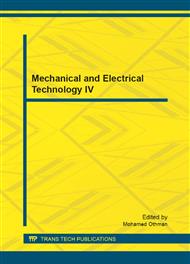p.2385
p.2389
p.2394
p.2399
p.2407
p.2411
p.2415
p.2419
p.2423
Design Research on Low Speed and Overloaded Transmission System Based on Design Principle of Reverse Transformation
Abstract:
As a typical large rotary dual-drive device, three-car dumper is an essential and important equipment of raw materials storage and transport in the power, chemical industry, metallurgy, ports and other industries. It has some characters such as massive structure, heavy bearer, low-frequency running, frequent starting and braking and mechanical center of gravity which often shifts. The low-speed drive system has some working characteristics such as heavy loads, heavy shocks, low speed, poor working conditions, often breaking teeth and so on, so we propose a reverse design method for low-speed overloaded open gears through using design principles of reverse transformation. By using product reverse technology, we make the parameter design of low-speed and overloaded open gear pairs of Delafu dumper localization, so it extends the service life of gear pair and parts replacement period.
Info:
Periodical:
Pages:
2407-2410
Citation:
Online since:
November 2012
Authors:
Keywords:
Price:
Сopyright:
© 2012 Trans Tech Publications Ltd. All Rights Reserved
Share:
Citation:


